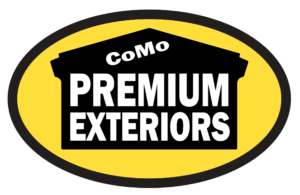Are you considering a new roof for your home? Metal roofing has gained popularity in recent years due to its durability, energy efficiency, and eco-friendliness. This comprehensive guide will take you through the cost for metal roof, the different materials available, and the factors that can impact the overall cost. You’ll also learn about the installation process, the benefits of choosing metal over other roofing materials, and how to best compare quotes and financing options.
Key Takeaways
- This article provides an overview of metal roof costs, including materials, labor expenses and additional cost factors.
- Metal roofs offer long-term value with energy efficiency benefits such as reflective surfaces and insulation.
- Comparing quotes from qualified contractors and financing options can help homeowners make an informed decision for their budget needs.
Breaking Down Metal Roof Costs
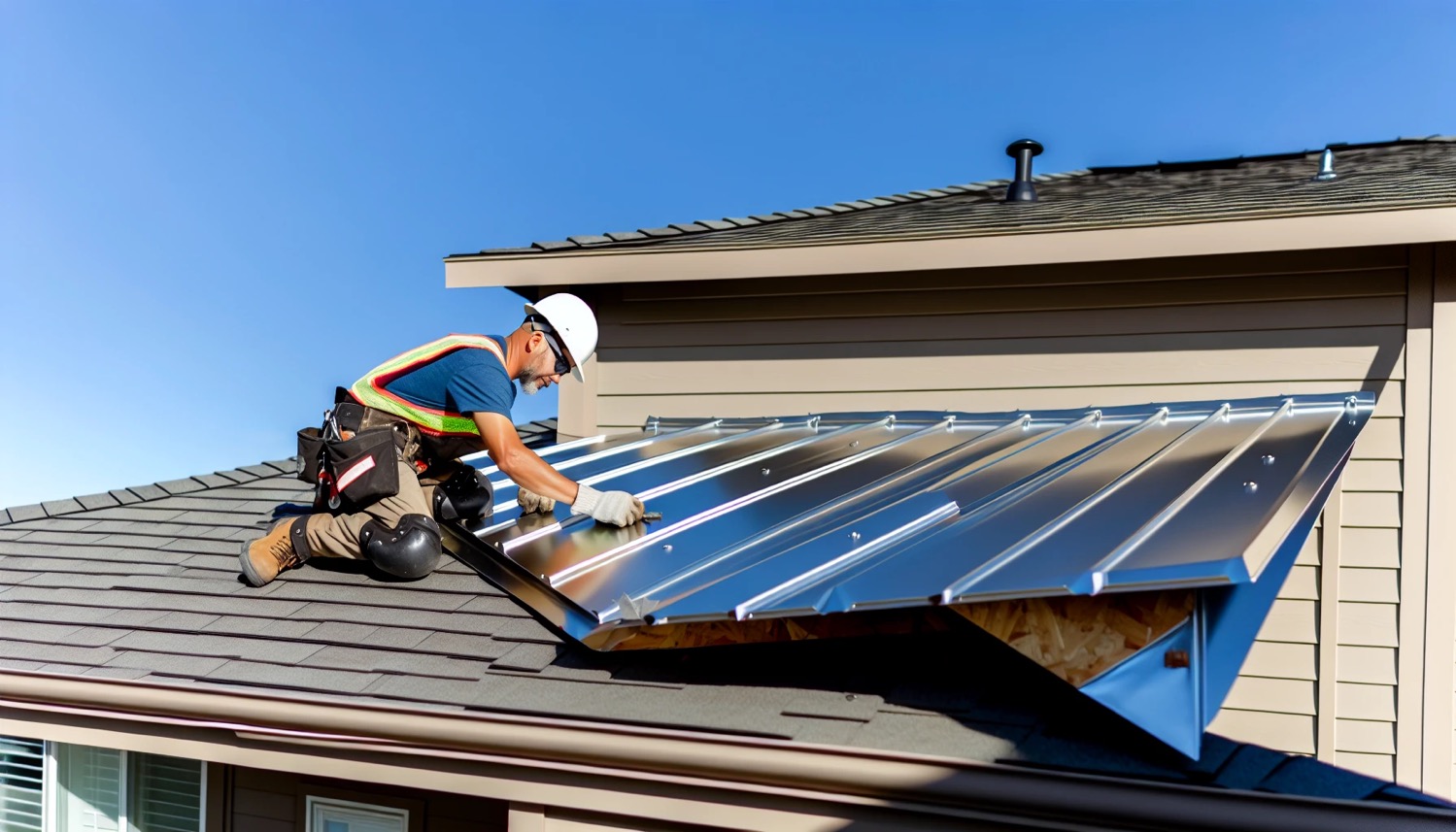
Metal roof installation
To grasp the cost of a metal roof, you need to consider various elements like the kind of metal roofing material, labor charges, and extra expenses such as permits or flashing. All these factors contribute significantly to the total cost of your metal roof project.
We will examine these factors thoroughly.
Material Choices and Their Impact on Price
The type of metal roofing material you choose can significantly impact the price. Common materials include steel, copper, and aluminum, each with varying costs per square foot. Steel is an affordable option, while copper is considered a high-end choice. The thickness of the material, or gauge, also affects the price, as thicker metal generally costs more.
A friend of ours, A&M Home Services puts it best. Before making a decision, it’s important to balance the advantages and disadvantages of each material, keeping long-term costs in mind.
Labor Expenses for Metal Roof Installation
Labor costs are another significant factor in the overall metal roof cost. These expenses, also known as metal roof installation costs, depend on factors such as the size and complexity of the roof, the contractor’s experience, and the location of the project. Generally, labor costs for metal roof installation range from $40 to $80 per hour or $400 to $800 per square.
Experienced contractors might have steeper labor charges, but their proficiency can lead to a more effective installation.
Additional Cost Factors
Apart from material and labor costs, there are other factors to consider when budgeting for a metal roof. These factors include:
- Underlayment: Underlayment acts as a barrier between the metal sheets or shingles and the roof’s framing.
- Flashing: Flashing directs water away from areas where the roof meets a vertical surface.
- Permits: Depending on your location, you may need to obtain permits for installing a metal roof.
These additional costs should be taken into account when calculating the overall cost of a metal roof.
The cost of permits varies depending on location but usually ranges from $250 to $1,000.
Price Per Square Foot: The Standard Measurement in Metal Roofing

Cost for metal roof per square foot
In the roofing industry, it’s common to express the cost of materials and installation per square foot. This standardized unit of measurement allows contractors and customers to easily calculate the total cost based on the size of the roof.
When considering a metal roof, it’s important to factor the metal roof cost per sq ft, which can vary from $2 to $43.42 per square foot, depending on the type of metal roof selected.
Understanding the ‘Per Square Foot’ Pricing Model
The ‘per square foot’ pricing model simplifies the process of estimating metal roofing costs. By dividing the total cost of the project, including labor and materials, by the total area of the roof, you can calculate the price per square foot. This pricing model accounts for various factors involved in a roofing project, providing a comprehensive cost estimate that’s easy to compare and plan for.
How Roof Size Influences Total Cost
Naturally, a larger roof will require more materials and labor, resulting in a higher total cost. However, it’s worth noting that the cost per square foot typically decreases for larger roof sizes. This is because contractors can often offer better prices for bulk materials and may be able to complete the installation more efficiently on larger projects.
For example, a 1500 sq ft metal roof cost can be lower per square foot than a smaller roof due to bulk pricing advantages.
Selecting Metal Roof Materials: Types and Prices
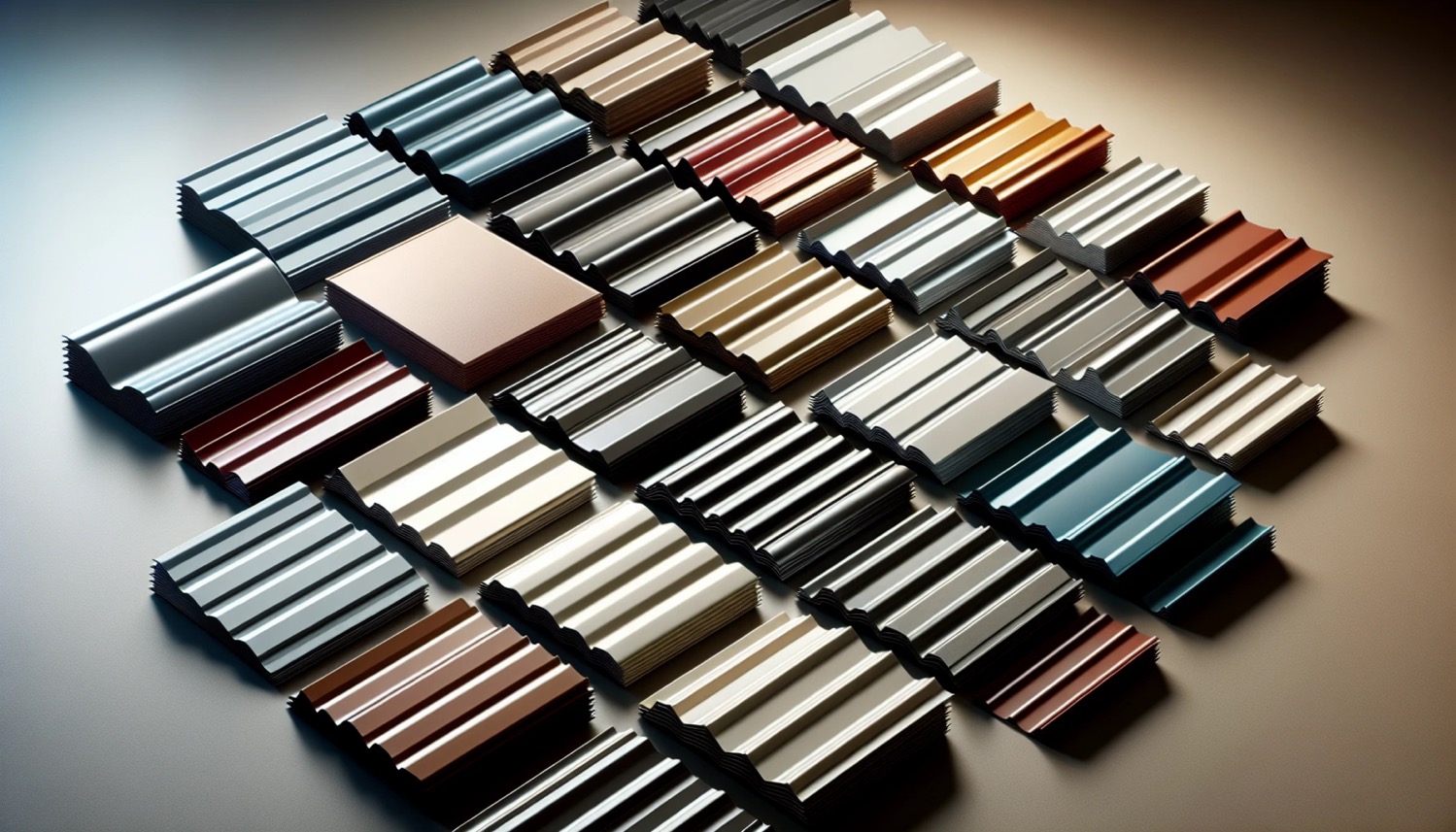
Steel roof panels
When picking the appropriate metal roof material for your house, it’s important to account for aspects such as cost, durability, and visuals. Various materials offer distinct advantages and price brackets.
We will analyze the most frequently used metal roof materials, such as steel, copper, and aluminum, along with their related costs.
Steel Roofs: Affordable and Durable
Steel roofs are a popular choice due to their affordability and durability. A steel roof can withstand harsh weather conditions and have a variety of coating options to enhance their performance.
The cost of steel roofing per square foot ranges from around $560 to $1,557, making it an attractive option for homeowners seeking a balance between cost and longevity.
The Elegance of Copper Roofing
Copper roof is known for its elegance and long-lasting performance. While more expensive than other metal roofing materials, copper roofs can last over a century and develop a beautiful patina over time, adding character to the building.
Copper roofing costs between $20 and $40 per square foot, making it a premium choice for those seeking luxury and durability.
Aluminum Roofs: Lightweight and Corrosion-Resistant
Aluminum roofs are another popular option, offering a lightweight and corrosion-resistant solution. Aluminum is energy-efficient, recyclable, and can withstand high winds, making it an excellent choice for many homeowners.
The cost of aluminum roofing per square foot ranges from $2.15 to $16.50, providing a balance of affordability and performance.
Complexity and Style: How They Affect Metal Roofing Prices
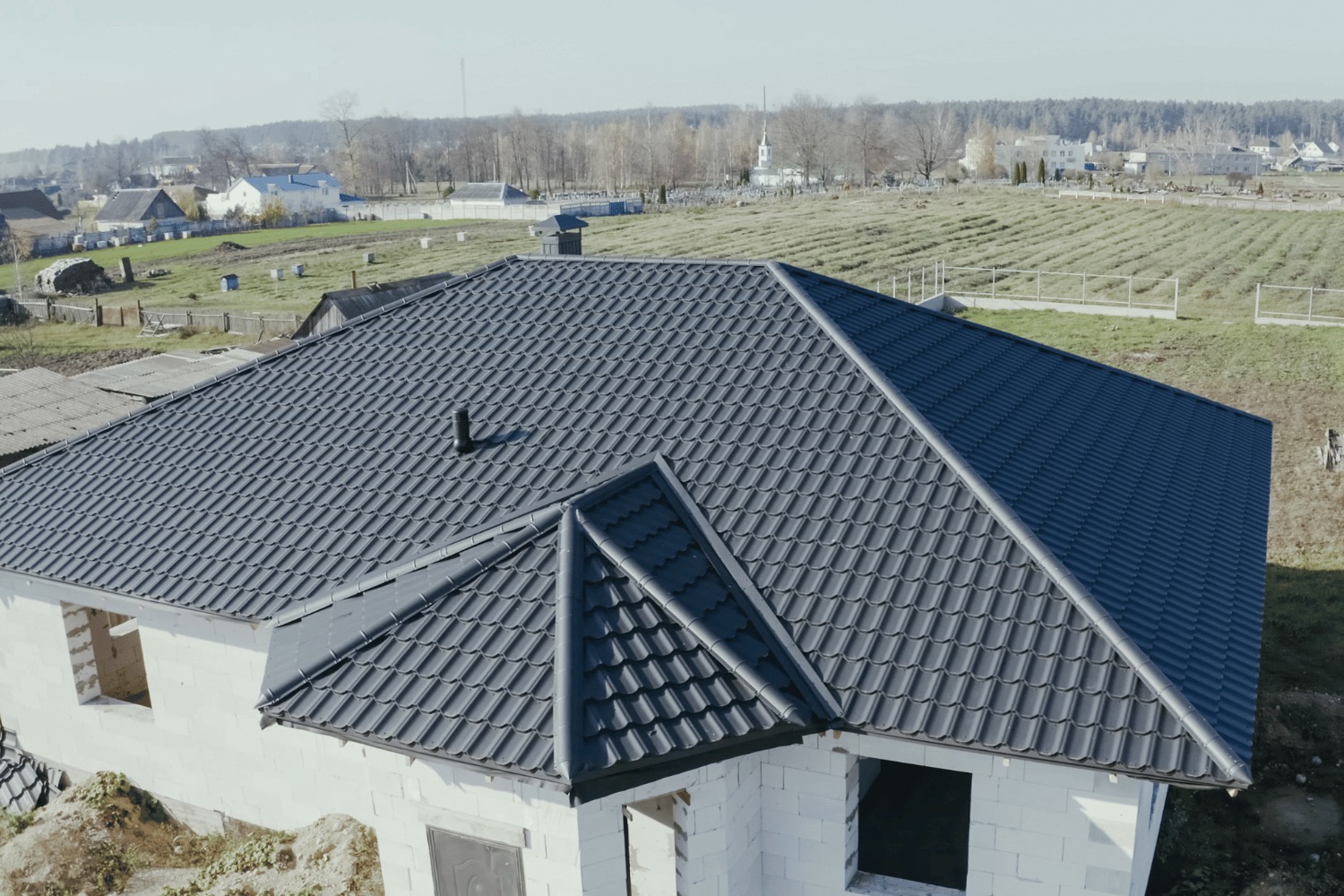
Complex metal roof design
The complexity and design of your roof can also influence the total cost of a metal roof. Steeper slopes and more complex shapes demand extra labor and materials, leading to increased prices. The choice between standing seam metal roofs and exposed fastener panels can also affect the cost.
We will analyze how these factors affect metal roofing prices.
The Impact of Roof Pitch and Shape
Roof pitch and shape play a significant role in metal roofing costs. Steeper roofs require more materials and labor, as they are more challenging to cover. Similarly, more complex roof shapes, such as those with multiple valleys or hips, can increase labor and material costs due to the additional cutting and custom fitting required.
Standing Seam vs. Exposed Fastener Panels
When deciding between standing seam and exposed fastener panels, you should take into account both visual appeal and cost. Standing seam panels offer a sleek, polished look but can be more expensive than exposed fastener panels, which are more cost-effective. The choice ultimately comes down to your personal style preference and budget.
Longevity and Maintenance: The Value Proposition of Metal Roofs
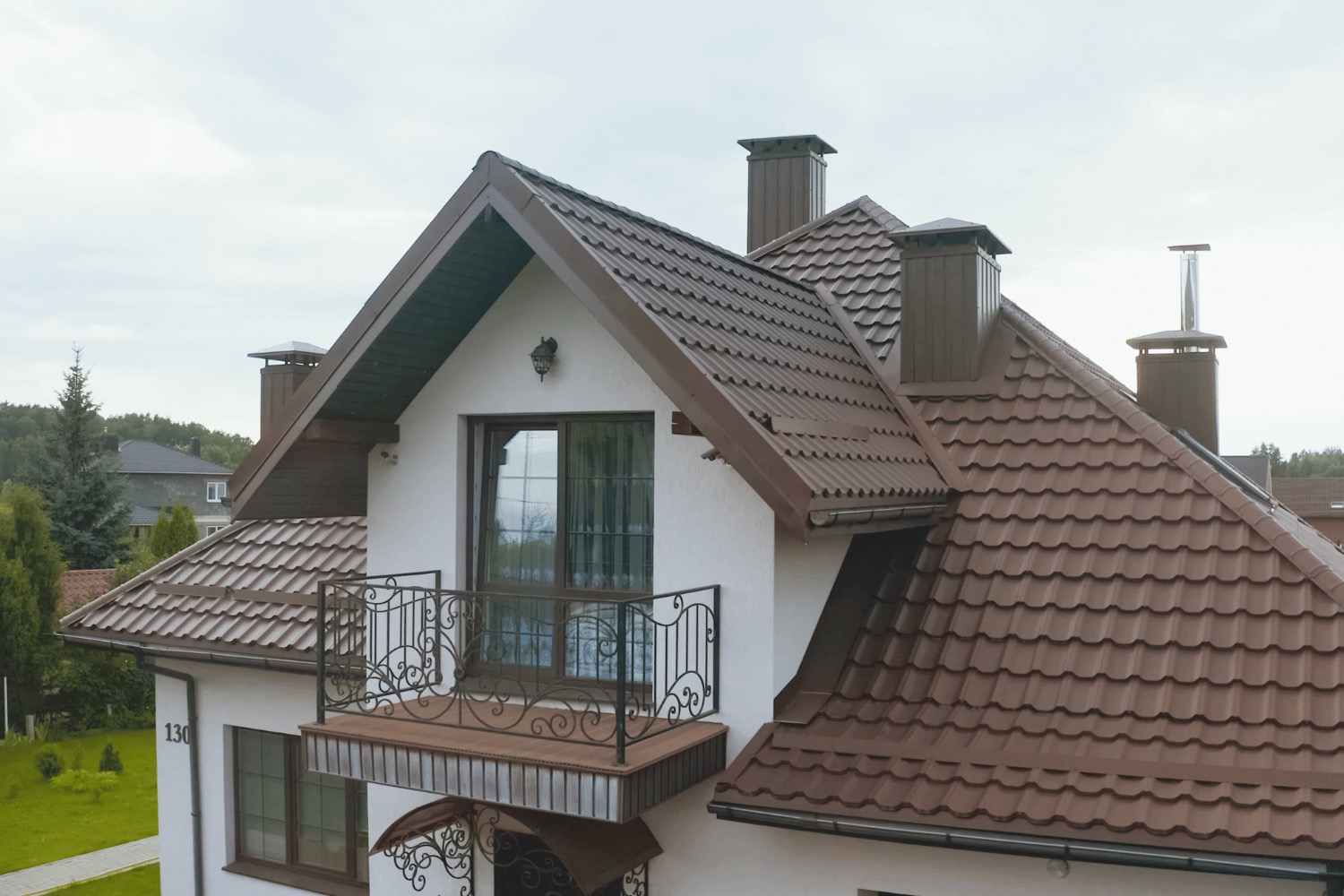
Long-lasting metal roof
One of the key advantages of metal roofs is their long lifespan and low upkeep costs compared to other roofing materials such as asphalt shingles. Metal roofs can last upwards of 50 years, requiring minimal maintenance and offering homeowners peace of mind.
We will delve deeper into the long-term value proposition of metal roofs.
Comparing Lifespans: Metal vs. Asphalt Shingles
When comparing the lifespans of metal and asphalt shingle roofs, metal roofs come out on top. A metal roof can last 50 years or more, while asphalt shingle roofs typically have a lifespan of 15 to 20 years. This longevity means that metal roofs can outlast other materials, providing homeowners with a more cost-effective solution in the long run.
Maintenance Costs Over Time
Metal roofs require minimal maintenance, which can result in significant cost savings over time. Annual inspections and cleaning are generally sufficient to keep a metal roof in good condition, and any necessary repairs are typically minor and infrequent.
In contrast, asphalt shingle roofs may require more frequent repairs and maintenance, adding to the overall cost of ownership.
Energy Efficiency and Eco-Friendliness: Metal Roofing’s Hidden Savings
In addition to their durability and low maintenance, metal roofs also offer energy efficiency and eco-friendly benefits. Reflective surfaces and insulation can help reduce energy costs, while the recyclability of metal roofs contributes to a lower environmental impact.
Let’s examine these hidden savings of metal roofing.
Reflective Surfaces and Insulation Benefits
Metal roofs have reflective surfaces that help reduce heat absorption, keeping your home cooler and decreasing the need for air conditioning. Insulation can also be added to further enhance energy efficiency by regulating temperature.
As a result, metal roofs can provide up to 40 percent energy savings on annual cooling costs.
Recycling and Environmental Impact
Most metal roofs are an environmentally friendly choice, as they are made from a significant percentage of recycled materials and can be fully recycled at the end of their lifespan. This reduces the demand for raw materials and the environmental impact associated with manufacturing and disposing of other roofing materials.
By choosing a metal roof, you’re making a sustainable choice for your home and the environment.
The Process of Installing a Metal Roof
Proper installation is crucial for a successful metal roof project. Ensuring that your roof is installed correctly will prevent leaks, permanent roof damage, and rust.
We will examine the significance of proper installation and the steps involved in getting ready for a metal roof installation.
Preparing for Installation
Before metal roofing installation, you need to secure the required permits and choose the appropriate materials for your project. This preparation ensures that your project complies with local building codes and regulations, and helps avoid any legal or financial issues that may arise from noncompliance.
It’s also important to engage a professional roofing contractor with experience in metal roof installation to guarantee a successful outcome.
The Role of Underlayment and Flashing
Underlayment and flashing are essential components of a metal roof installation, providing a watertight seal and preventing leaks. Underlayment serves as a barrier between the metal panels and the roof’s framing, while flashing directs water away from vulnerable areas where the roof meets a vertical surface.
Ensuring that these elements are installed correctly contributes to the overall success and longevity of your metal roof.
Navigating Roof Replacement: When to Choose Metal
If your existing roof is showing signs of damage or nearing the end of its lifespan, you may be considering a roof replacement. Opting for a metal roof offers several advantages, such as durability, energy efficiency, and low maintenance.
We will examine the factors that might sway your decision to opt for a new metal roof for your next roofing project.
Signs Your Roof Needs Replacement
Common signs that your roof may need replacement include:
- Missing granules on shingles
- Curling or cracking shingles
- Extensive moss growth
- Shingles blown off by strong winds
- Visible damage or loose fasteners on a metal roof
If you notice any of these signs, it’s important to consult with a professional roofing contractor to assess the damage and determine if a replacement is necessary.
Why Metal Might Be the Right Choice for Your Next Roof
Choosing a metal roof for your next roof replacement has several benefits, including:
- Longevity: Metal roofs can last 50 years or more, outlasting other materials like asphalt shingles.
- Energy efficiency: Metal roofs offer energy savings, helping to reduce heating and cooling costs.
- Low maintenance: Metal roofs require minimal maintenance, saving you time and money.
- Eco-friendly: Metal roofs are recyclable and often contain a high percentage of recycled materials, making them a sustainable choice for homeowners seeking long-term value and sustainability.
These benefits make metal roofs a smart choice for homeowners looking for a durable, energy-efficient, and low-maintenance roofing option.
Comparing Quotes and Financing Options
When planning a budget for a metal roof, it’s crucial to compare estimates and financing options to ensure you get the most value for your money. By evaluating:
- prices
- materials
- labor costs
- warranties
- additional services offered by different contractors
You can make an informed decision that fits your needs and budget.
We will discuss the benefits of comparing estimates and financing options.
Getting Multiple Estimates
Obtaining multiple estimates from different contractors is essential to ensure you’re getting a fair price for your metal roofing project. This allows you to:
- Compare prices, services, and materials
- Make an educated decision about which contractor to work with
- Negotiate better terms with your preferred contractor, potentially saving you money in the long run.
Financing Your Metal Roof
Financing options, such as those offered by CoMo Exteriors, can make metal roofing more affordable for homeowners. With financing plans ranging from 12 months to 10 years, some with 0% interest, you can spread the cost of your metal roof over time, making it more manageable for your budget.
Explore various financing options and lenders to find the best rates and terms for your specific needs.
Summary
In conclusion, metal roofing offers numerous advantages, such as durability, energy efficiency, and eco-friendliness. By understanding the factors that impact metal roof costs, selecting the right materials, and properly installing your roof, you can ensure a successful and long-lasting result. It’s essential to compare quotes and financing options to make an informed decision that best suits your needs and budget. With proper planning and execution, a metal roof can be a wise investment for your home.
Frequently Asked Questions
Is it cheaper to put a metal roof or shingles?
Metal roofs are typically more expensive than shingles, since not only are the metal panels themselves more costly, but they also require more skill and labor to install.
How much should I budget for a metal roof?
For a metal roof, you can expect to pay an average of $11,000, with costs ranging from $7,081 to $110,150, depending on size, type, and location.
What are the disadvantages of a metal roof?
Metal roofs are expensive, difficult to install, and require regular maintenance to prevent rust and corrosion. Additionally, they are prone to noise from rain and hail, and can become too hot in sunny climates.
How much does it cost to put a metal roof over shingles?
On average, it costs around $11 per square foot for professional installation of a metal roof over shingles. This cost may increase depending on the type of metal and labor involved, and prices are typically higher during peak summer season.
What factors affect the cost of a metal roof?
Material selection, labor costs, and other considerations all affect the cost of a metal roof. These factors must be taken into consideration when calculating the total cost.
